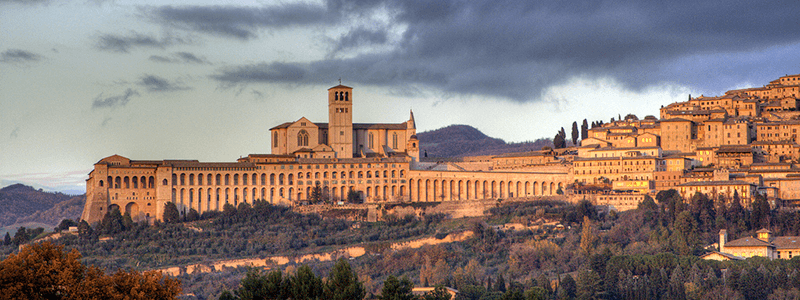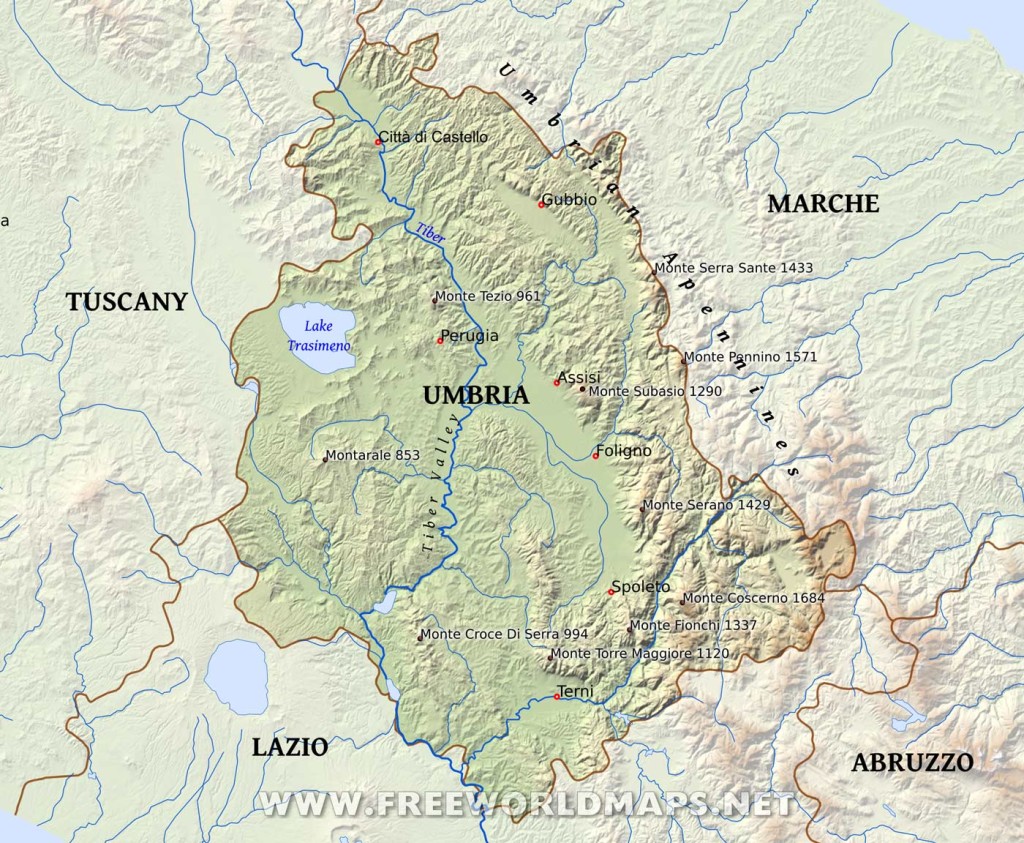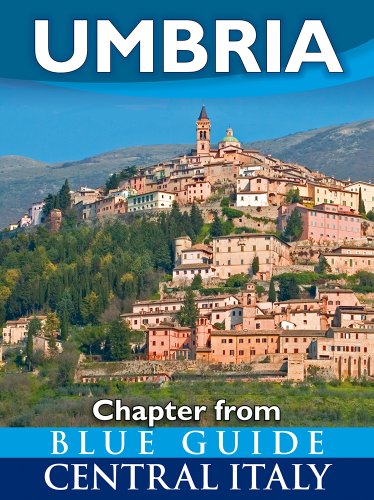
Within its borders Umbria contains a dozen or so classic hill-towns, each resolutely individual and crammed with artistic and architectural treasures to rival bigger and more famous cities. To the east, pastoral countryside gives way to more rugged scenery, none better than the dramatic twists and turns of the Valnerina and the high mountain scenery of the Parco Nazionale dei Sibellini.
Umbria was named by the Romans after the mysterious Umbrii, a tribe cited by Pliny as the oldest in Italy, and one that controlled territory reaching into present-day Tuscany and the Marche. Although there is scant archeological evidence pertaining to them, it is known that their influence was mainly confined to the east of the Tiber; the darker and bleaker towns to the west – such as Perugia and Orvieto – were founded by the Etruscans, whose rise forced the Umbrii to retreat into the eastern hills.
Roman domination was eventually undermined by the barbarian invasions, in the face of which the Umbrians withdrew into fortified hill-towns, paving the way for a pattern of bloody rivalry between independent city-states that continued through the Middle Ages. Weakened by constant warfare, most towns eventually fell to the papacy, entering a period of economic and cultural stagnation that has continued almost to the present day.
Historically, however, Umbria is best known as the birthplace of several saints, St Benedict and St Francis of Assisi being the most famous, and for a religious tradition that earned the region such names as Umbra santa, Umbra mistica and la terra dei santi (“land of saints”). The landscape itself has contributed much to this mystical reputation, and even on a fleeting trip it’s impossible to miss the strange quality of the Umbrian light, an oddly luminous silver haze that hangs over the gentle curves of the land.
 After years as an impoverished backwater, Umbria has begun to capitalize on its charms. Foreign acquisition of rural property is now as rapid as it was in Tuscany twenty years ago, though outsiders have done nothing to curb the region’s renewed sense of identity and youthful enthusiasm, nor to blunt the artistic initiatives that have turned Umbria into one of the most flourishing cultural centres in Italy. Headline-grabbing earthquakes in 1997 briefly dented tourist numbers, but they have had a negligible long-term effect – at least as far as visitors are concerned – as the majority of sights suffered little damage.
After years as an impoverished backwater, Umbria has begun to capitalize on its charms. Foreign acquisition of rural property is now as rapid as it was in Tuscany twenty years ago, though outsiders have done nothing to curb the region’s renewed sense of identity and youthful enthusiasm, nor to blunt the artistic initiatives that have turned Umbria into one of the most flourishing cultural centres in Italy. Headline-grabbing earthquakes in 1997 briefly dented tourist numbers, but they have had a negligible long-term effect – at least as far as visitors are concerned – as the majority of sights suffered little damage.
Most visitors head for Perugia, Assisi – with its extraordinary frescoes by Giotto in the Basilica di San Francesco – or Orvieto, where the duomo is one of the greatest Gothic buildings in the country. For a taste of the region’s more understated qualities, it’s best to concentrate on lesser-known places such as Todi, Gubbio, ranked as the most perfect medieval centre in Italy, and Spoleto, for many people the outstanding Umbrian town.
Although there are few unattractive parts of the Umbrian landscape (the factories of Terni and the Tiber Valley being the largest blots), some districts are especially enticing: principally the mountainous Valnerina, Piano Grande and Lago Trasimeno, the last of which is the largest lake in the Italian peninsula, with plenty of opportunities for swimming and watersports.
Getting around the region by public transport presents no problems. Distances between the main sights are short, and there are excellent rail links both within the region and to Florence and Rome.
For more information about Umbria visit wikipedia












